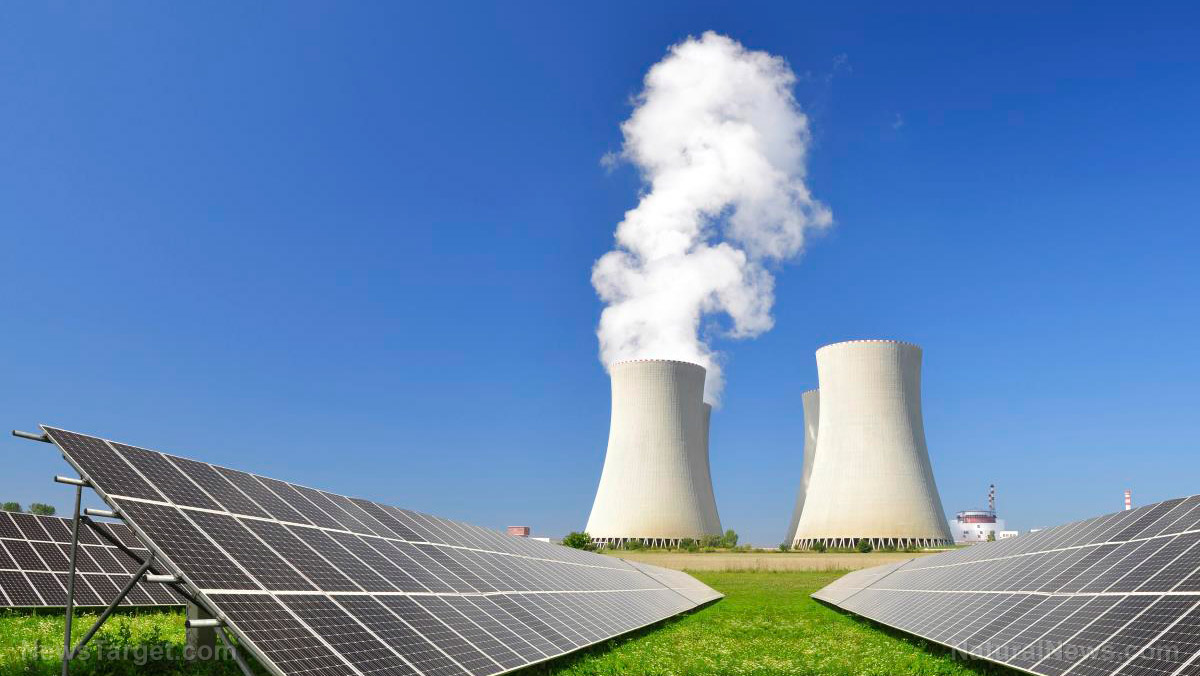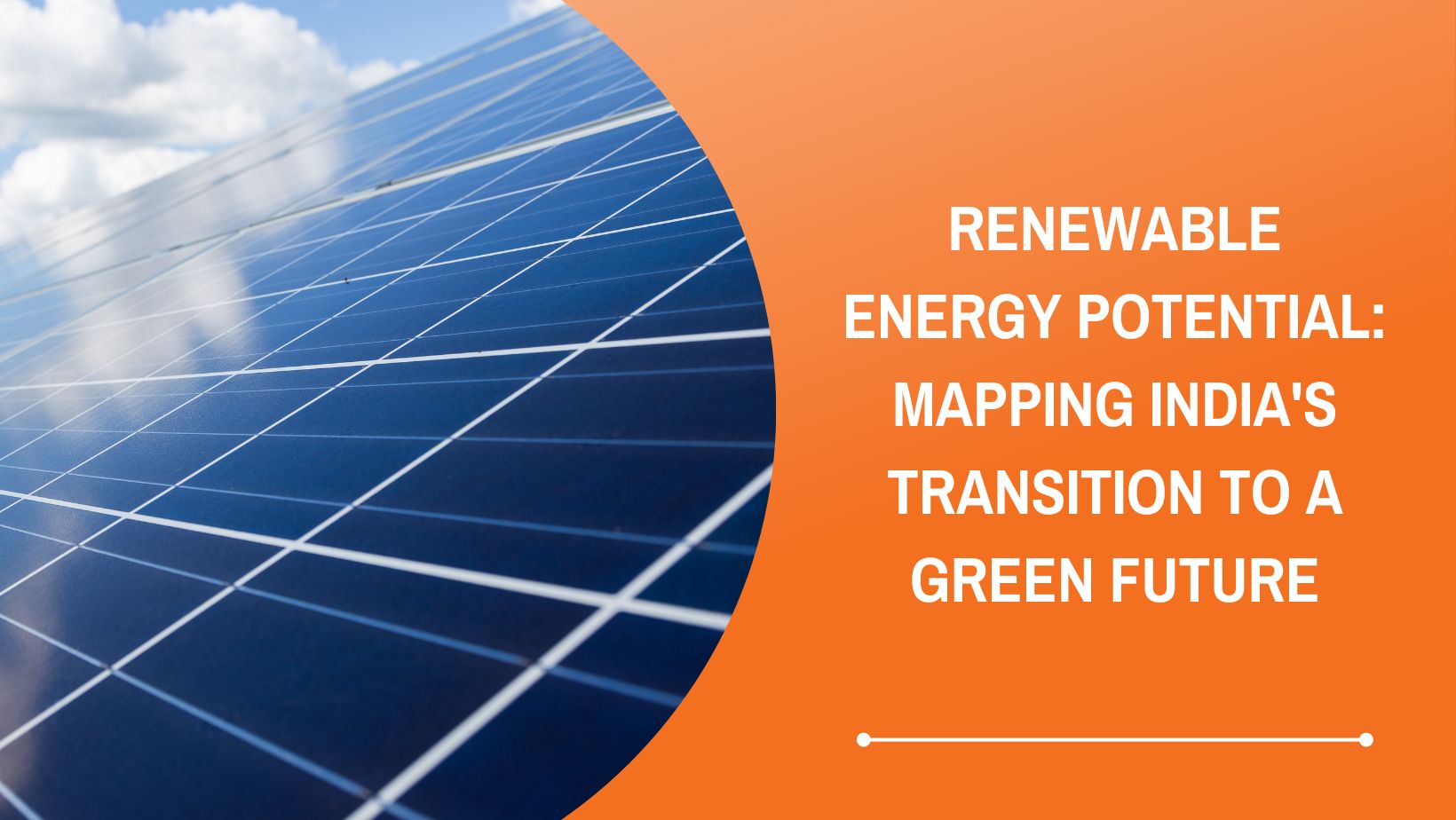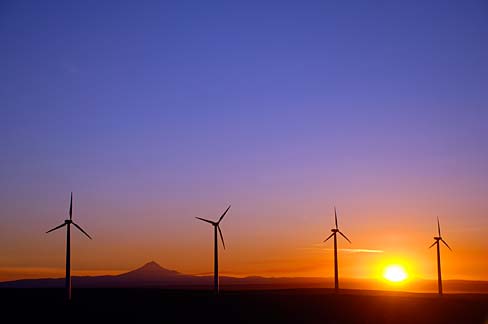Renewable Energy Potential: Mapping India's Transition to a Green Future
India stands at a crucial juncture in its quest for sustainable development, marked by a significant shift towards renewable energy sources. With the pressing need to mitigate climate change and reduce dependence on fossil fuels, the country is increasingly turning to solar energy and other renewables to power its future. This transition is not merely about embracing cleaner sources of energy; it represents a fundamental restructuring of India's energy landscape, with far-reaching implications for its economy, environment, and society.
Embracing Solar Power:
Solar energy has emerged as a cornerstone of India's renewable energy strategy. Blessed with abundant sunlight throughout the year, India possesses immense solar energy potential, making it an ideal candidate for large-scale solar power generation. The government's ambitious targets, such as achieving 100 GW of solar capacity by 2022 and 450 GW by 2030, underscore its commitment to harnessing this abundant resource.
One of the most notable successes in India's solar journey has been the dramatic reduction in solar tariffs. Through competitive bidding processes and technological advancements, the cost of solar power has plummeted, making it increasingly competitive with conventional sources of energy. This cost competitiveness has not only accelerated the deployment of solar projects but has also made solar energy accessible to a wider range of consumers, including industries, commercial establishments, and households.
Beyond Solar: Diversifying the Renewable Portfolio:
While solar energy dominates discussions around India's renewable energy transition, other sources such as wind, hydro, biomass, and geothermal also play crucial roles. Wind energy, in particular, has witnessed significant growth, with India emerging as one of the world's top wind energy producers. Similarly, the untapped potential of hydroelectric power, particularly in regions like the Himalayas, presents opportunities for further expansion.
Moreover, advancements in technology and innovation are opening up new frontiers in renewable energy. From offshore wind farms to floating solar installations and innovations in energy storage, these developments are enriching India's renewable energy portfolio and enhancing its resilience against variability in weather conditions.
Policy Support and Regulatory Framework:
The success of India's energy transition hinges upon a conducive policy environment and robust regulatory frameworks. The government's flagship initiatives, such as the National Solar Mission, the Green Energy Corridor Project, and various state-level policies, provide the necessary impetus for renewable energy deployment. Furthermore, measures such as renewable purchase obligations, net metering, and fiscal incentives are incentivizing investments in clean energy projects.
However, challenges persist, including land acquisition issues, grid integration constraints, and financing hurdles. Addressing these challenges requires a coordinated effort from policymakers, industry stakeholders, and civil society to streamline processes, enhance grid infrastructure, and mobilize investments.
Socioeconomic Impacts and Opportunities:
India's transition to renewable energy is not only about reducing carbon emissions; it also holds immense socioeconomic potential. The renewable energy sector is a significant driver of job creation, offering employment opportunities across the value chain, from manufacturing and installation to operations and maintenance. Moreover, decentralized renewable energy solutions have the potential to empower rural communities by providing access to clean, reliable, and affordable energy.
Furthermore, by reducing dependence on imported fossil fuels, India's renewable energy push enhances energy security and reduces the nation's vulnerability to global energy price fluctuations. This, in turn, strengthens India's economic resilience and fosters sustainable growth.
Conclusion:
India's journey towards a green future powered by renewable energy is both promising and challenging. While significant progress has been made, much work lies ahead to realize the full potential of renewables and achieve the nation's energy transition goals. Collaboration among government, industry, academia, and civil society will be key to overcoming barriers, driving innovation, and accelerating the adoption of clean energy technologies. With steadfast commitment and collective action, India can pave the way for a sustainable, inclusive, and prosperous future powered by renewable energy.
For more information visit us @ https://www.azurepower.com/energy-transition
People
Circles
Posts
France dumps Renewables Target, goes back to Nuclear instead, risking Global Pariah Status
https://joannenova.com.au/2024/01/france-dumps-renewables-target-goes-back-to-nuclear-instead-risking-global-pariah-status/
America is building two new nuclear reactors – China and Russia combined are building dozens
https://www.naturalnews.com/2023-12-04-countries-investing-nuclear-energy-america-languishing-renewables.html

As the U.S. continues to invest in expanding its renewable energy capabilities, energy expert Ronald Stein warns that the rest of the world is instead focusing on nuclear energy. “American political leaders such as President Joe Biden and California Gov. Gavin Newsom continue ‘to dream the impossible dream’ that intermittent electricity from wind and solar […]
www.naturalnews.com
Videos
On this episode of The Cost of Everything we take a closer look at the cost of wind energy and how reliable this source of energy is. Host Christy Ai speaks with author Trevor Letcher about which countries produce and utilize this energy the most, and the cost of building and maintaining a turbine. Later in the show, finance expert Todd ‘Bubba’ Horwitz joins the show to discuss the downside of wind energy.
People
Circles
Videos
On this episode of The Cost of Everything we take a closer look at the cost of wind energy and how reliable this source of energy is. Host Christy Ai speaks with author Trevor Letcher about which countries produce and utilize this energy the most, and the cost of building and maintaining a turbine. Later in the show, finance expert Todd ‘Bubba’ Horwitz joins the show to discuss the downside of wind energy.
Posts
Renewable Energy Potential: Mapping India's Transition to a Green Future
India stands at a crucial juncture in its quest for sustainable development, marked by a significant shift towards renewable energy sources. With the pressing need to mitigate climate change and reduce dependence on fossil fuels, the country is increasingly turning to solar energy and other renewables to power its future. This transition is not merely about embracing cleaner sources of energy; it represents a fundamental restructuring of India's energy landscape, with far-reaching implications for its economy, environment, and society.
Embracing Solar Power:
Solar energy has emerged as a cornerstone of India's renewable energy strategy. Blessed with abundant sunlight throughout the year, India possesses immense solar energy potential, making it an ideal candidate for large-scale solar power generation. The government's ambitious targets, such as achieving 100 GW of solar capacity by 2022 and 450 GW by 2030, underscore its commitment to harnessing this abundant resource.
One of the most notable successes in India's solar journey has been the dramatic reduction in solar tariffs. Through competitive bidding processes and technological advancements, the cost of solar power has plummeted, making it increasingly competitive with conventional sources of energy. This cost competitiveness has not only accelerated the deployment of solar projects but has also made solar energy accessible to a wider range of consumers, including industries, commercial establishments, and households.
Beyond Solar: Diversifying the Renewable Portfolio:
While solar energy dominates discussions around India's renewable energy transition, other sources such as wind, hydro, biomass, and geothermal also play crucial roles. Wind energy, in particular, has witnessed significant growth, with India emerging as one of the world's top wind energy producers. Similarly, the untapped potential of hydroelectric power, particularly in regions like the Himalayas, presents opportunities for further expansion.
Moreover, advancements in technology and innovation are opening up new frontiers in renewable energy. From offshore wind farms to floating solar installations and innovations in energy storage, these developments are enriching India's renewable energy portfolio and enhancing its resilience against variability in weather conditions.
Policy Support and Regulatory Framework:
The success of India's energy transition hinges upon a conducive policy environment and robust regulatory frameworks. The government's flagship initiatives, such as the National Solar Mission, the Green Energy Corridor Project, and various state-level policies, provide the necessary impetus for renewable energy deployment. Furthermore, measures such as renewable purchase obligations, net metering, and fiscal incentives are incentivizing investments in clean energy projects.
However, challenges persist, including land acquisition issues, grid integration constraints, and financing hurdles. Addressing these challenges requires a coordinated effort from policymakers, industry stakeholders, and civil society to streamline processes, enhance grid infrastructure, and mobilize investments.
Socioeconomic Impacts and Opportunities:
India's transition to renewable energy is not only about reducing carbon emissions; it also holds immense socioeconomic potential. The renewable energy sector is a significant driver of job creation, offering employment opportunities across the value chain, from manufacturing and installation to operations and maintenance. Moreover, decentralized renewable energy solutions have the potential to empower rural communities by providing access to clean, reliable, and affordable energy.
Furthermore, by reducing dependence on imported fossil fuels, India's renewable energy push enhances energy security and reduces the nation's vulnerability to global energy price fluctuations. This, in turn, strengthens India's economic resilience and fosters sustainable growth.
Conclusion:
India's journey towards a green future powered by renewable energy is both promising and challenging. While significant progress has been made, much work lies ahead to realize the full potential of renewables and achieve the nation's energy transition goals. Collaboration among government, industry, academia, and civil society will be key to overcoming barriers, driving innovation, and accelerating the adoption of clean energy technologies. With steadfast commitment and collective action, India can pave the way for a sustainable, inclusive, and prosperous future powered by renewable energy.
For more information visit us @ https://www.azurepower.com/energy-transition
France dumps Renewables Target, goes back to Nuclear instead, risking Global Pariah Status
https://joannenova.com.au/2024/01/france-dumps-renewables-target-goes-back-to-nuclear-instead-risking-global-pariah-status/
America is building two new nuclear reactors – China and Russia combined are building dozens
https://www.naturalnews.com/2023-12-04-countries-investing-nuclear-energy-america-languishing-renewables.html

As the U.S. continues to invest in expanding its renewable energy capabilities, energy expert Ronald Stein warns that the rest of the world is instead focusing on nuclear energy. “American political leaders such as President Joe Biden and California Gov. Gavin Newsom continue ‘to dream the impossible dream’ that intermittent electricity from wind and solar […]
www.naturalnews.com
The Bitter Irony, Texas Has Run Out Of Energy
Texas, the land of ten-gallon hats and wildcatters, has run out of Energy. The Lone Star State, which in the past has had such oil barons as Cullen, Murchison, and Hunt, has run dry; there's not enough Energy to run their air-conditioners.
Just as they did last year around this time, the Energy Reliability Council of Texas recommends that everyone turn up their thermostats and reduce their energy usage. Why? Because the Texas energy grid cannot supply the peak demand created by another hot Texas summer. Texas has run out of Energy.
It's not an accident, a quirk of nature, or a rare environmental circumstance; this is the direct result of an Energy "Policy" gone wrong. And Texas is far from alone in this misdirected "Policy," California has followed the same policy with equality deleterious results.
California, you may not know, has some of the most significant oil reserves in the world, but most (especially the off-shore resources) are untouchable. In my home state of Pennsylvania, we have the world's largest anthracite coal reserves (the cleanest burning of all coals).
Pennsylvania is called the Saudi Arabia of Coal. But much of Pennsylvania coal also is off-limits, part of the nation's vast supplies of Energy that, by law, cannot be used.
Yes, much of our oil and almost all of our coal is legally unusable because of various national Energy Policies gone wrong. These policies have been enacted over the past half-century. To appreciate just how fragile our energy systems have become, we must follow some history. It all began with the concept of an Energy Policy. What, you may ask, is a "Policy?" A "Policy" is nothing more than a law enacted by Congress that sets the direction for the country. In the case of Energy, Congress passed the first such law back in 1954, called the Depletion Allowance, which is currently institutionalized as: 26 U.S. Code § 613 - Percentage Depletion.
Depletion was Congress' first foray into managing the nation's Energy. This law provides companies that extract natural resources with a tax subsidy based on the theory that, eventually, they will run out of those natural resources and lose their livelihood. Has that ever actually happened? Have there been any oil companies, coal, or any other resource that has been completely depleted? Well, no. It's a tax break for an event that has never occurred. But that didn't stop the politicians. They could now claim that they were "managing" oil and helping the "American Citizens."
It is a tactic right out of the old Soviet Union's Playbook. Politicians come to the "aid" of the citizens, create an issue, then solve it and claim credit, the classic Hegelian Dialectic of Problem, Solution, Resolution (or, more correctly, thesis, antithesis, synthesis).
And it's been how this nation has been running its energy systems ever since. We've allowed the politicians in Washington to set the agenda for all our energy use. Is there something special about our political class that gives them unique insight into energy usage? Something that provides them with special knowledge in the technology and engineering involved in energy extraction? Absolutely not.
But they have a unique perspective on the vast amount of money and power involved in the Energy Industry. And an ability to wrap new laws in such market-ready terms as renewable, sustainable, and environmentally friendly.
In short, what we've done over the past 70 years is replace the system that best allocates resources and capital with a legal and political system. In America today, Energy is assigned by law, not by consumer demand. If Texas wants more Energy during this heat wave, they need to change the law. That's the bitter irony.
Making all this the more poignant, at one time, the United States had the most accurate and efficient method of allocating resources; it was called Capitalism. Entrepreneurs anxious to make a profit would meet the energy shortfall in a truly capitalist country. The free market, when unleashed, will provide all the energy Texas can use. Allow the wildcatter to drill; they will produce the Energy to meet the Texas demand.
Governments in a free market system would set and enforce the standards under which that Energy could be provided. Environmental, Safety, and Clear Air Standards are clearly principal areas that Governments must enforce. Standards, that by-and-large, already exist.
But Governments cross the line when they take over the market functions. Governments should not have the role of determining which type of Energy we should use. Worst still, Governments should refrain from subsidizing one type of Energy versus another, as they are doing today. And the reason for this is simple. When Governments step into the marketplace to subsidize a particular energy source, they destroy the price mechanism that makes Capitalism so effective. Today renewables, in particular, have become so heavily subsidized that we have yet to understand whether it is an effective and reliable source of Energy.
Several Grid Operators have pointed to Renewables as unreliable. We know that Wind Turbines only provide electricity when the wind blows (duh). But because much of the Wind Turbine Revenue comes through subsidies, we cannot measure their actual worth or contribution to the energy grid.
Do away with all energy subsidies, and we will finally get an accurate picture of our energy system. After what would undoubtedly be a difficult transition, we would see energy demand and supply come into balance. Shortages would vanish. That's how Capitalism works, and it's been working that way since Adam Smith wrote The Wealth of Nations 200 years ago.
Release the Free Market, and you'd solve our energy problem.
**
Follow me here on Sovren for more stories from the ValueSide.
There is no such thing as full 'green energy.'
https://www.newstarget.com/2023-07-31-green-energy-isnt-green-new-analysis-tears-down-lies-about-renewables.html

There really isn’t any such thing as “green energy,” and a new analysis from “Twitter Files” researcher Michael Shellenberger exposes the lies about renewable energy sources in epic fashion. “People say solar panels don’t produce carbon emissions, but they do. And now, a major new investigation by Environmental Progress, drawing on the research of @enricomariutti […]
www.newstarget.com










